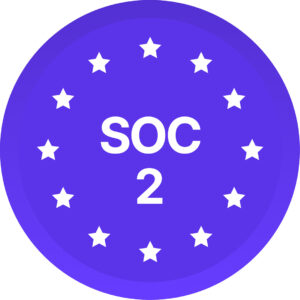After analyzing workplace culture data from over 1,000 companies across 35+ countries and collecting feedback from 750,000+ employees, I’ve discovered that your biggest retention risks aren’t revealed in exit interviews or annual performance reviews. They’re buried in the cultural data you’re not measuring.
What is the Financial Impact of Cultural Blindness
Here’s a statistic that should make every CHRO and senior HR leader pause: regrettable turnover costs Canadian organizations between $30,000-$250,000+ per departing employee, depending on their role level. But here’s what’s even more alarming: most of this turnover is preventable if you know where to look.
At Diversio, we’ve identified that traditional culture approaches fail because:
- Company values ≠ day-to-day experience for most employees
- “Culture fit” hiring actually excludes diverse talent and reduces innovation
- Perks and policies don’t address systemic cultural issues that drive talented people away
- Annual engagement surveys are too slow to catch retention risks before it’s too late
Research by Leigh Branham, reveals that 89% of bosses wrongly believe their employees quit because they want more money, when in reality only 12% actually do.
What Actually Drives Employee Retention (Beyond the Perks)
Through our research across industries and regions, we’ve identified that retention isn’t just about compensation or benefits. 70% of employee engagement variance is directly tied to managers, and our HR & DEI analytics show six critical factors that predict whether someone will stay or leave:
1. Inclusive Culture = 3x Higher Loyalty
Employees who feel genuinely included and valued are three times more likely to stay. This requires measurable psychological safety, equitable opportunity access, and belonging metrics.
2. Internal Mobility = 2x Retention Rate
LinkedIn’s data confirms what we see: companies with strong internal mobility retain employees at twice the rate of those without clear advancement paths.
3. Manager Quality & Support
Poor management is still the #1 reason people leave. Managers directly influence motivation, inclusion, training advocacy, and career development decisions.
4. Growth Opportunities Prevent Mission Misalignment
35% of employees quit due to lack of mission fit and growth potential. McKinsey research shows that without clear development paths, even engaged employees start looking elsewhere.
5. Recognition & Psychological Safety
Employees are 5x more likely to stay when they feel recognized and psychologically safe to contribute their best work.
6. Flexible Work-Life Integration
52% of younger workers specifically want better work-life balance, and companies that offer genuine flexibility see significantly higher retention rates.
The Performance Culture Framework: Moving Beyond Engagement Scores
Traditional engagement surveys tell you how people feel but they don’t predict who’s about to leave or why. That’s why we developed the Performance Culture Framework, a model that tracks four interconnected elements, continuously measured across our inclusion survey platform and our performance & retention system.
Motivation × Inclusion × Training × Access to Opportunity = Retention
Here’s how to measure each component:
Motivation Metrics:
- Pulse surveys: “Is your opinion valued by your team?”
- Sentiment analysis on team communications
- Goal alignment and autonomy indicators
Inclusion Metrics:
- Demographic comparison of engagement, promotion, and attrition rates
- Psychological safety assessments
- Equity in opportunity distribution
Training Metrics:
- Skill application tracking and demonstrated development
- Learning & development participation rates
- Manager effectiveness scores
Access to Opportunity Metrics:
- Development plan completion rates
- Internal mobility patterns
- Mentorship and stretch assignment distribution
From Reactive HR to Predictive Culture Management
The companies that are winning the talent war aren’t just measuring culture—they’re predicting and preventing retention risks before they become costly exits. As Forbes highlights, organizations with strong cultures see 40% lower turnover.
Instead of asking “Why did they leave?” ask “What signals did we miss?”
Our most successful clients use real-time culture dashboards that flag retention risks through:
- Early warning signals: Low inclusion scores, manager effectiveness declines, lack of development conversations
- Predictive modeling: Identifying high-risk employees based on cultural and engagement patterns
- Targeted interventions: Manager coaching, personalized development plans, team-specific culture improvements
Measuring Culture ROI: Immediate Financial Impact
When you can identify and address retention risks proactively, the financial impact is immediate:
- 20% reduction in regrettable turnover in the first year
- 15% improvement in manager effectiveness scores
- 10% boost in employee engagement, particularly among high-potential talent
- 3.5x ROI on targeted retention interventions
For a 100-person company, preventing just five regrettable departures can save $150,000-$500,000 annually in replacement costs alone, not including the productivity losses, knowledge gaps, and team morale impacts.
Implementation Strategy: Making Culture Measurable
Culture is a business-critical performance driver that can be measured, managed, and optimized like any key metric. MIT Sloan research confirms that toxic culture is 10.4 times more powerful than compensation in predicting turnover.
The organizations that will thrive in the next decade are those that leverage AI-powered diagnostics to:
- Measure culture continuously, not annually
- Empower managers with data-driven insights and tools
- Focus on inclusion and belonging as retention strategies
- Invest in predictive analytics to stay ahead of turnover risks
- Create transparent, data-backed development pathways for all employees
Your retention risks are hiding in plain sight within your cultural data. The question isn’t whether you have the data, it’s whether you’re ready to act on what it’s telling you.
Ready to transform your retention strategy with data-driven culture analytics?
Diversio’s platform helps organizations measure, predict, and improve the cultural factors that drive retention. See how Fortune 500 companies are reducing regrettable turnover by 20% while boosting employee engagement. Book a Demo today!

